Introduction
This article provides an overview of the best practices for minimal impact winter backpacking through the framework of the current Seven Principles of Leave No Trace (LNT). These principles are not necessarily intended to be strict, inviolable rules – aside from perhaps not leaving a pile of human waste on the trail. Instead, they provide guidance for making sound decisions related to outdoor impacts. The exact applications sometimes require exercising judgment informed by the science behind the principles.

The Expanding Popularity of Winter Backpacking
Winter backpacking is much more intimidating than its three-season counterpart, although a mid-summer trek in Death Valley would rightfully scare the trail runners off most hikers. Even relatively fair-weather outdoor recreation in the colder months comes with challenges that are largely absent the rest of the year. Low temperatures, limited daylight, and terrain often covered in snow or ice all add complexity to a trip.
While many backpackers sit out the winter season and pick backpacking up again in the spring, the popularity of winter outdoor recreation is increasing. And rightfully so, as the joys and rewards of winter backpacking are so numerous they’d warrant a separate article or an entire book. Following wildlife tracks across the snow, enjoying incredible stargazing, not having to worry about annoying insects, packing tasty and fresh food that doesn’t spoil, and creating elaborate snow shelters and snow furniture are just a few.
Lighter and more comfortable equipment and clothing, flexible schedules as a result of work-from-home arrangements, and an overall increase in outdoor recreation in general during the last few years all contribute to more people getting out in winter. With more people getting out and exploring their public lands in winter, it means that it’s important for folks – even those who’ve been winter backpacking for decades – to brush up on the current best LNT practices for minimal impact backpacking in winter.

The conditions one might find when backpacking in winter can vary greatly from region to region and within the same region based on elevation. For some landscapes, like the lowland areas of the Southeast and Southwest, there usually isn’t much practical difference between backpacking in winter and backpacking the rest of the year other than being prepared for colder temperatures and increased rain. In other areas, particularly those where snow is measured in feet, backpacking in winter is different in such fundamental ways that it requires specialized skills and equipment – including Leave No Trace skills.
The seven principles of Leave No Trace are:
- Plan Ahead and Prepare
- Travel and Camp on Durable Surfaces
- Dispose of Waste Properly
- Leave What You Find
- Minimize Campfire Impacts
- Respect Wildlife
- Be Considerate of Other Visitors
Winter-specific considerations to keep in mind when applying these techniques on backpacking trips will be covered in the body of this article. In addition to reviewing the published information from the Leave No Trace Center for Outdoor Ethics, I conducted an interview with Ben Lawhon, Senior Director of Research and Consulting at Leave No Trace, for additional insight into the best ways to travel lightly on public lands in the winter months. I also used my personal experience with practicing Leave No Trace skills during winter backpacking trips to illustrate certain approaches and provide first-hand observations.
Plan Ahead and Prepare
Of paramount importance in any season, planning ahead for a trip and being properly prepared for conditions is absolutely crucial for safety, comfort, and minimum impacts in winter. The consequences of not doing so tend to be greater and manifest themselves more quickly in winter. Although many things in winter take significantly longer than in summer – setting up a shelter, procuring water, dressing, undressing, etc. – it seems that when bad things happen they tend to happen fairly quickly and have multiple compounding effects. Lawhon says that not properly planning and preparing for a winter trip is likely the most common Leave No Trace skill that backpackers transitioning into winter are lacking.
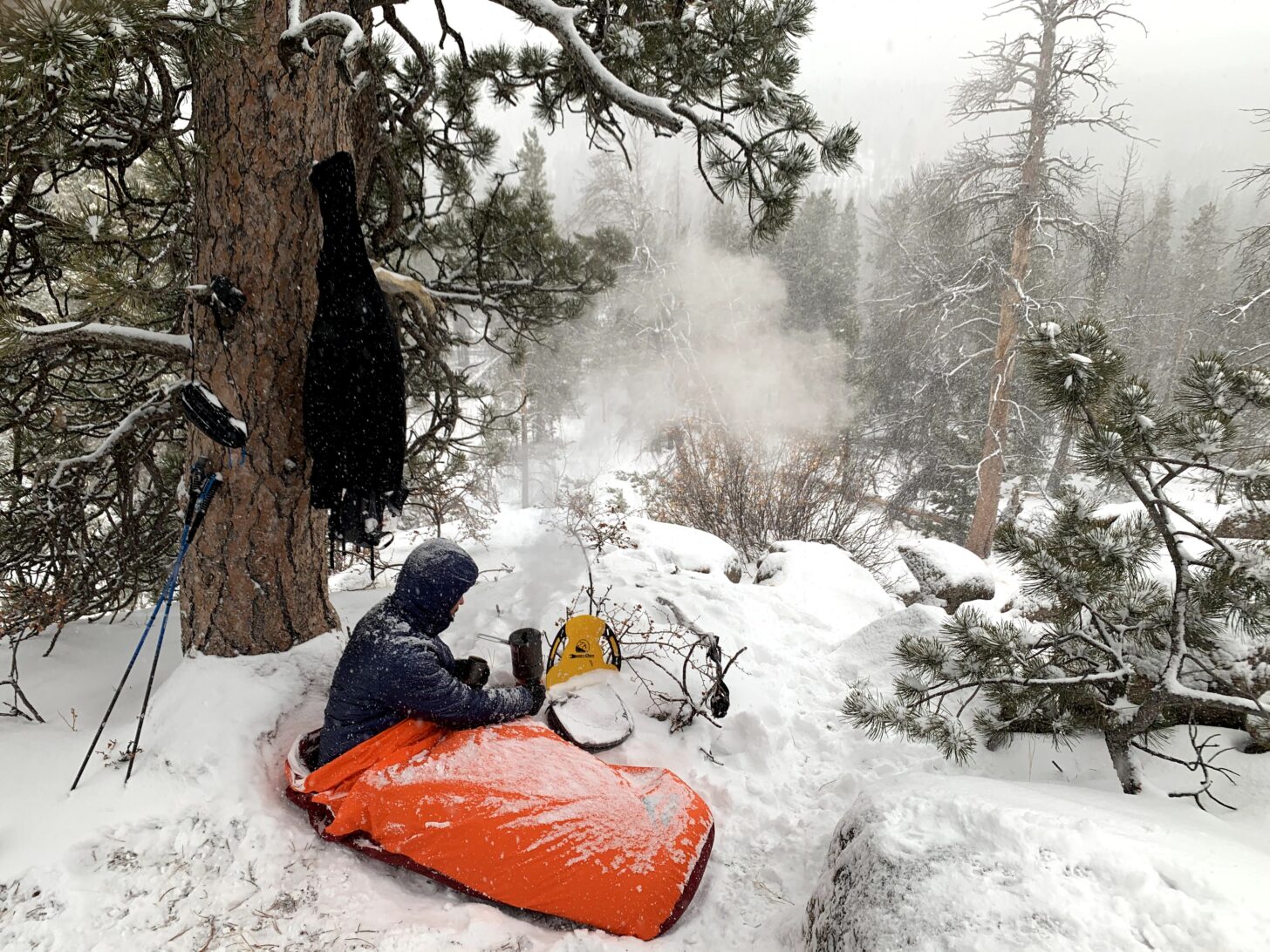
For example, a fuel bottle gets left at camp or falls off a pack during a scramble over a snow-laden deadfall and this isn’t realized until you get to the next campsite. In summer, this might simply mean no hot meal for dinner or cold coffee the next morning. In winter, it would likely mean an incredibly difficult time melting snow for water and having to build a fire to do so, if firewood is available (or putting handfuls of snow in a Nalgene and trying to melt minuscule amounts of snow with body heat).
If adequate water can’t be acquired, then it might limit your ability to cook dehydrated meals as well as keep yourself hydrated. The consequences of being underfed and dehydrated on a person’s physical performance are considerable. Add in subfreezing temperatures and performance deteriorates further. I’ll end the winter backpacking catastrophizing here, but the profound impacts simple oversights or mistakes can have on comfort and safety should not be taken lightly. More than any other season, winter is not the time to experiment with fringe techniques.
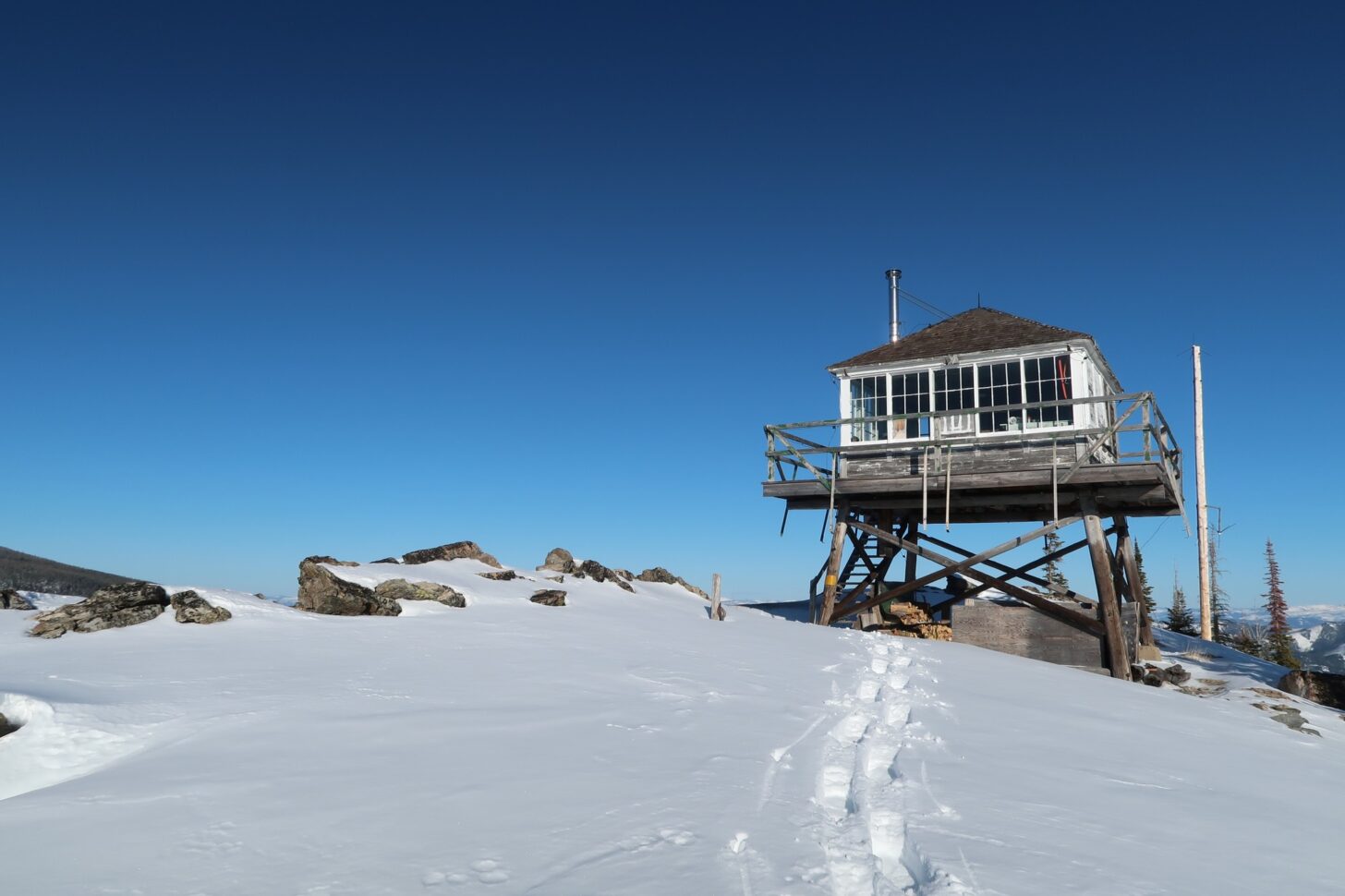
In addition to the usual planning involved in backpacking trips (permit requirements, trail conditions, and restrictions in place to protect the resource) planning ahead in winter involves knowing the potential hazards of your route (specifically avalanche danger), the possibility of limited access to trailheads, hazardous water crossings, and planning on how to handle contingencies due to weather, terrain, or other unforeseen circumstances.
Learn more about trek planning in Backpacking Light’s comprehensive Trek Planning Masterclass – free for Unlimited Members.
Travel and Camp On Durable Surfaces
One of the benefits of winter camping in a snowy climate is that durable surfaces are abundant. Deep snow cover allows for you to snowshoe or ski off-trail without having to worry about impacting ground cover. And by using snowshoes or skis to stamp out a spot for your tent, you can create a campsite pretty much anywhere.

There is no precise metric at which snow cover becomes a durable surface due to variations in the type of snow, but “If you’ve got light, powdery snow, that’s not going to provide the same level of protection as more dense, set-up snow,” Lawhon explained.
Avoiding areas with thin snow cover – of any type – is of primary importance. The general guideline from Leave No Trace is that 6 to 8 inches (15 to 20 cm) of snow can usually be considered as a durable surface and is when travel impacts to vegetation would be limited. However, what type of footwear you have on – crampons, microspikes, or other traction devices – might need to be taken into consideration when making a judgment call on what option is best. “It’s less of a set number and more about what are the clues on the ground,” said Lawhon.
Being able to choose from a wide selection of campsites in snow-covered terrain also makes it somewhat easier to be more deliberate about campsite selection and to choose places that are not only low-impact, but which are also in locations sheltered from prevailing winds, above cold sinks (areas where cooler air settles overnight – typically near bodies of water or in small valleys), and are oriented to maximize the limited daylight of winter. The ability to select more ideal campsites and to further customize them by digging trenches in the snow and/or snow caves to get out of the wind and make yourself more comfortable by creating benches and tables is a novel and downright fun part of winter camping. When moving on from a campsite where you’ve been particularly industrious and built furniture or shelters using the snow, these should be destroyed and the area naturalized as much as possible. This is actually pretty fun, as getting to go berserk with a snow shovel on a snow cave is more enjoyable than the tedious and sweat-inducing labor of building one. And it allows the next visitors the opportunity to experience a landscape that is in a more natural state.
Staying in rental cabins, huts or yurts can be a great way to mix up your usual backpacking trips and create an opportunity to introduce others to the charms of winter backpacking. And these surfaces are about as durable as it gets. Many of these are available through the United States Forest Service (USFS) and can be reserved on recreation.gov. In my opinion, these provide the best of both worlds in regard to winter recreation. You get the experience of being out in a natural environment and free of distractions (other than those you may have brought along, either physically or mentally), but without so much of the work of winter backpacking. You can lay out and stargaze until you get chilly, then walk into a cabin warmed by a wood stove and have plenty of elbow room to cook up a tasty and elaborate meal. Not having to pack a winter shelter, subzero sleeping bag, and other items associated with camping in winter make this a much more beginner-friendly option for those who are curious about winter backpacking and wishing to develop their skills.
Dispose of Waste Properly
Unless you’re staying in an area with facilities built to handle human waste (i.e. an outhouse at a campsite, cabin, or trailhead, for example), packing out solid human waste is the simplest, and sometimes only, option. Digging down to the ground through three feet of snow only to encounter frozen ground that renders a trowel moot is not a good way to start your day. So be prepared with WAG bags or similar products to pack out all solid human waste. Although packing it out is the gold standard, the Leave No Trace Center for Outdoor Ethics notes another option: “in lieu of packing it out, cover and disguise human waste deep in snow away from travel routes and at least 200 feet (70 adult steps) from water sources.” Toilet paper should absolutely be packed out if using this method.
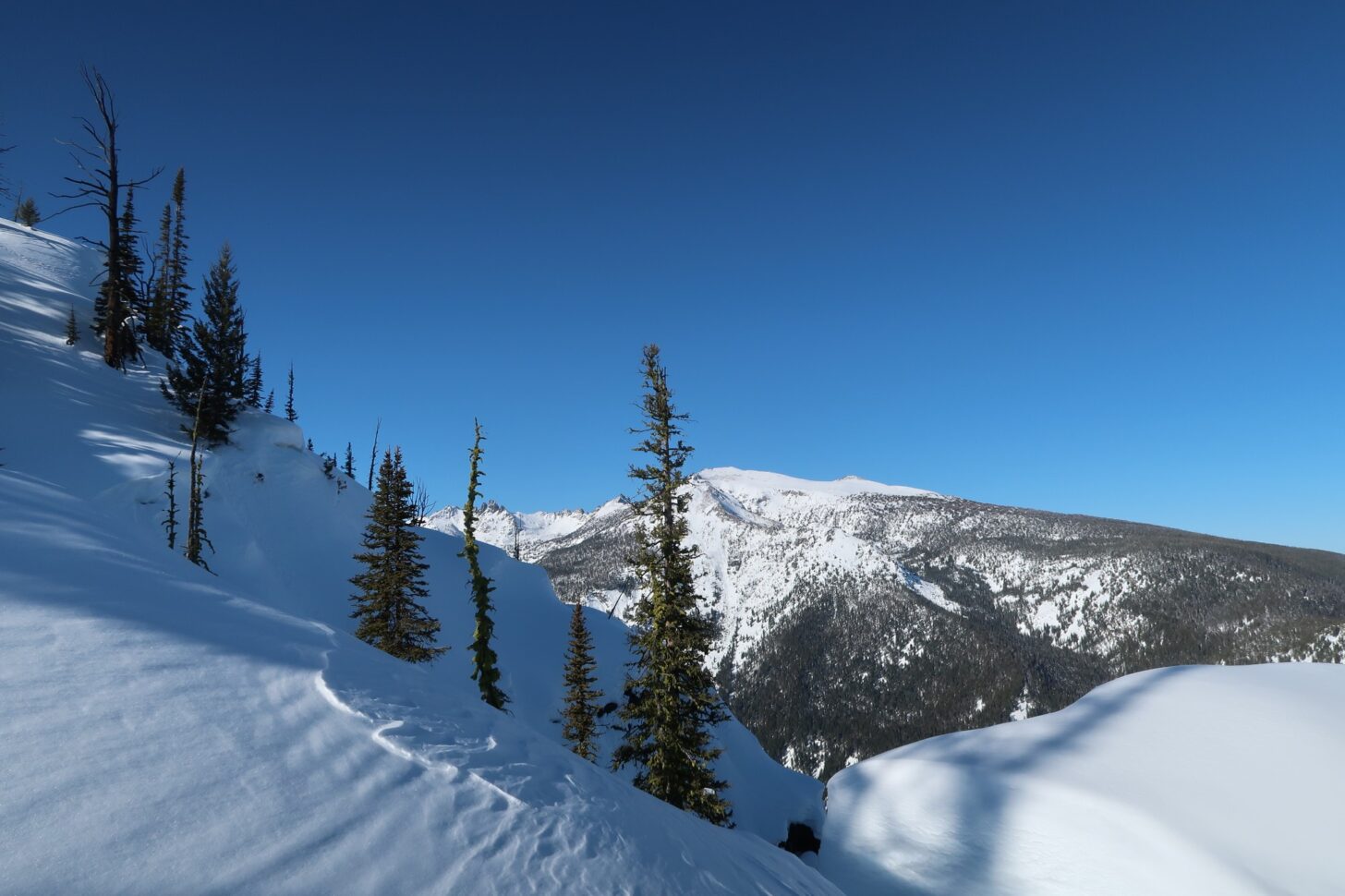
Liquid waste also needs to be given a bit more consideration in snow-covered terrain. Since most backpackers will be using snow to melt water, that means the water source is everywhere. No one wants to toss a clump of yellow snow into their pot. Fortunately, this rarely seems to happen – the abundance of snow, the relatively small numbers of winter backpackers, and the tendency to disperse rather than concentrate at campsites all help in avoiding this unpleasant situation. It seems most common in areas near cabins, huts, or yurts where those staying there don’t want to leave the comfort of the abode any more than they have to. Unfortunately, this means they (and also their dogs) risk urinating in the same places where others might be tempted to gather snow for water, since they also don’t want to leave the comfort of a shelter.
In addition to not urinating in obvious places where folks might gather water, another way to be considerate of other users regarding human waste is to cover the area with snow so people don’t have to see your marking, or to urinate close to the base of a tree where it is extremely unlikely anyone would be gathering water, since those places tend to have more debris (leaves, twigs, etc.) in the snow. Ben Lawhon of the Leave No Trace Center for Outdoor Ethics suggested that folks camping in small groups might consider designating a specific area for liquid waste to avoid any issues.
Leave What You Find
Adhering to this LNT principle is perhaps the only one that is actually made easier during winter. Snow typically covers up the rocks, artifacts, and other small items that are most tempting for hikers to take with them. And it seems that even the most ardent proponent of LNT wouldn’t begrudge you for taking home a snowball if you were so inclined. When snow cover isn’t thick enough to hide cool rocks, or fossils, or an artifact that intrigues you, remember that removing such items from public lands is not only against the LNT best practices but is also a crime in many contexts (particularly for artifacts). Instead of taking it with you, take a picture, spend some time admiring the object of your desire, then move on.
For folks who find themselves spending time in USFS rental cabins or other shared spaces in winter, this principle would also apply to leaving those structures in the same condition, or better, than when you found them. This includes the inverse of this principle – take with you what you bring. No matter how tempting it is to leave food for the next visitor or something you think might be appreciated or useful, it is almost always better to resist this urge (especially with food) as it can create problems with rodents. And visiting cabins that are crowded with the cast-off pots, utensils, and items from previous guests is rarely charming – it usually just creates needless clutter in spaces that are already often rather cramped.

Minimize Campfire Impacts
Campfires in any season have become a contentious topic in the backpacking community over the past few years. The topic has been discussed here at Backpacking Light and in numerous other places. While many would argue – and quite compellingly – that the best place for a fire in winter is in a wood stove in a cabin, there are ways to have responsible campfires within the framework of minimal impact camping during winter backpacking trips. Leaving the debate about the appropriateness of campfires for another time and place, if you do decide to have a campfire in the winter months there are important things to keep in mind.
First and foremost is whether or not campfires are even allowed by the land management agency which controls the public lands where you are backpacking. If fires are allowed and you’re staying at a campsite with an existing fire ring, you should use the infrastructure that is already there. If not, consider a fire pan if appropriate for the terrain you are in. Digging through the snow down to the ground, then scattering the ashes and filling the hole back in with snow is also a good option. As tempting as it might be to break off dead branches from trees, do not do this as the wood is not dead and down.
If you plan on relying on a fire for any part of a subzero expedition, reading the Jack London short story “To Build A Fire” should be mandatory (spoiler alert: it is not a how-to guide).
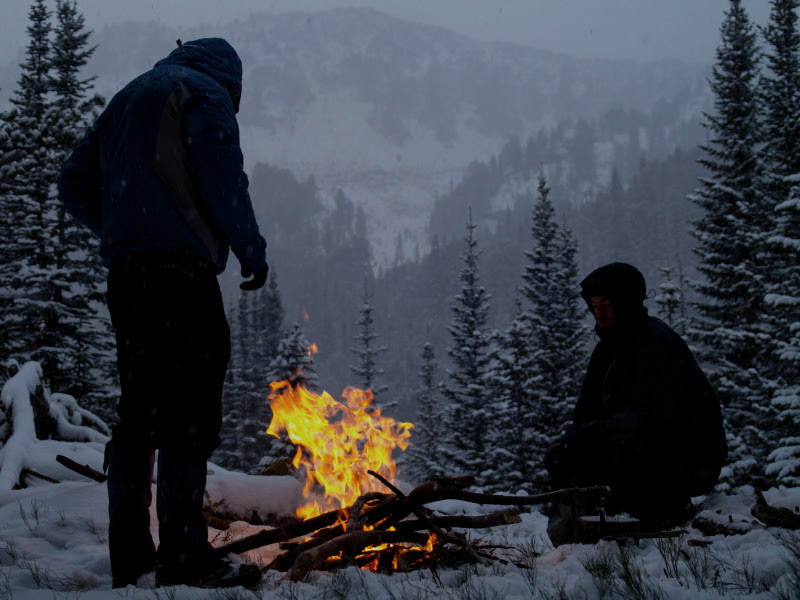
Respect Wildlife
As tough as it might seem to backpack in winter, it’s unimaginably tougher to be an animal that must survive through the winter. Wildlife is especially vulnerable in winter, making it even more important to avoid causing them additional stress or impacting their habitat. Seeing animal tracks across the snow is especially magical. One of my favorite memories is of seeing rodent tracks and then them disappearing when an owl or hawk swooped down and grabbed them, with some of the snow disturbed from the flapping of the wings. However, actively following animals that you can see is something that must be avoided in winter. Observe from a distance and make doubly sure that you aren’t causing them any stress.
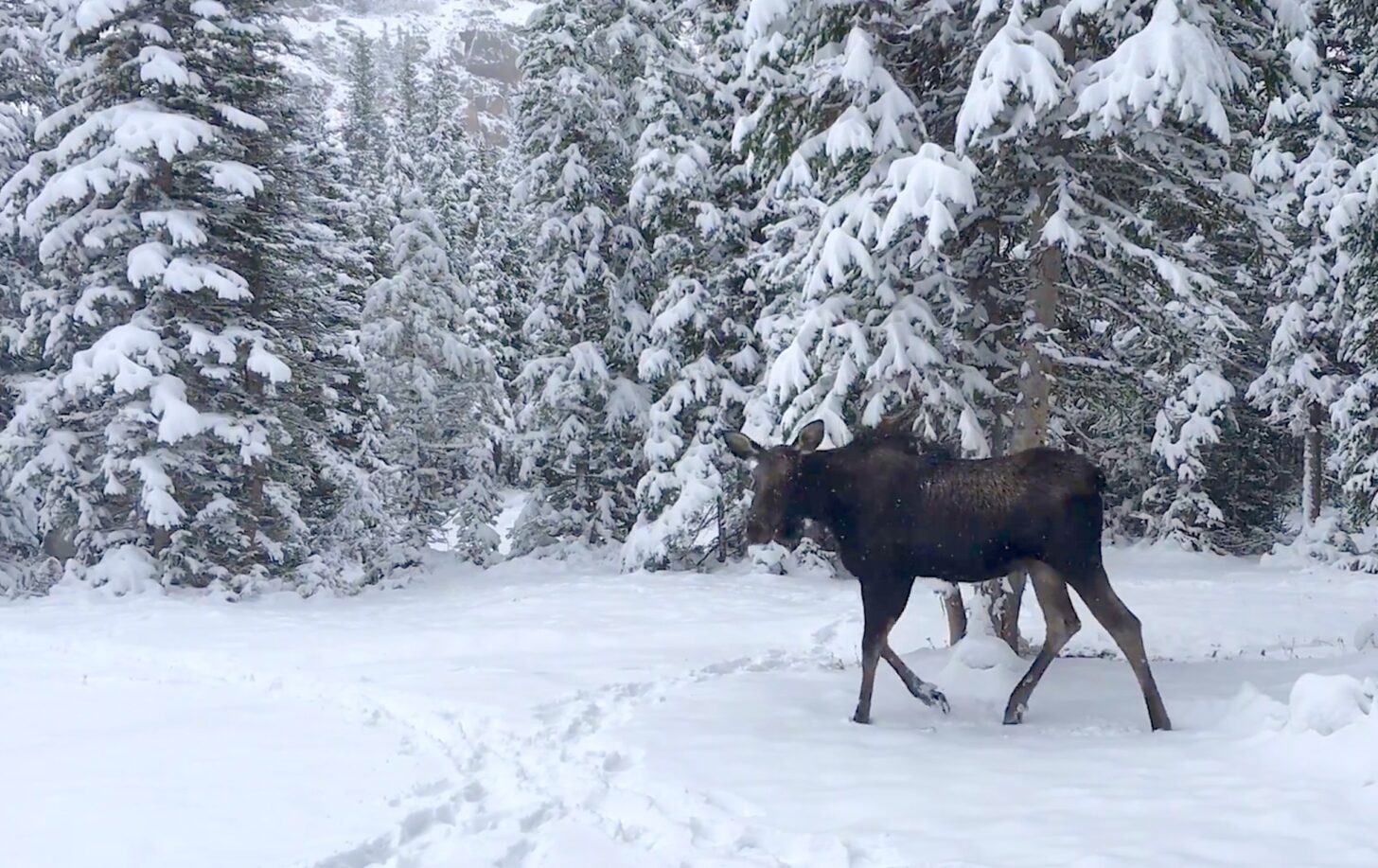
Winter is also not a time to let your guard down in regard to food storage. Although bears in most northern latitudes are generally hibernating (bears in warmer climates typically don’t hibernate to the degree most expect) and aren’t as much of a threat to food, life, or limb, there are numerous other critters who could wreck your trip by gnawing into your food stash. Make sure all food is properly secured either with a canister, Ursack, or hung an appropriate distance from where an animal could get to it.
Be Considerate of Other Visitors
Consideration for other visitors is important in all seasons and, with more people recreating on our public lands each year, this is an LNT skill we should all be practicing plenty. Basic courtesy and respect cost nothing to extend to fellow visitors and allow everyone to enjoy their time outdoors with a spirit of shared fellowship and contemplation rather than competition.

With snow closing many of the forest roads that lead to trailheads, there can be an increased concentration of visitors to the most popular, accessible, or attractive locations. If you’re seeking solitude, then it’s probably best to avoid those locations so as to not inadvertently project your potential grumpiness towards others that are out there enjoying themselves (bonus points if you don’t project your grumpiness towards those you encounter and you don’t complain about all the crowds on the internet later). By avoiding popular places at popular times you also help to reduce the impacts that can result from concentrated use at specific locations (i.e., social trails around hot springs as folks seek privacy to change, use the bathroom, camp, cook, etc.) or on specific trails. When using trails that have multiple uses and might be groomed specifically for a certain type of recreation – skate skiing, classic cross-country skiing, and snowshoeing, for example – take care to not posthole into the ski tracks or otherwise disturb the surface. When in backcountry areas, similar etiquette applies and if at all possible (and I can think of very few situations where it isn’t possible) do not hike or snowshoe on the tracks of skiers skinning uphill.
The silence and hush of winter is profound and a magical feature of the season. Keep this in mind when around other groups and avoid loud conversations, music, or other disruptive noises. While snow has a muffling effect and can deaden sound, sound does travel further in chilly weather.
As noted in a previous section, dismantling snow structures made when camping allows other visitors to experience a minimally impacted landscape rather than having to look at your attempts at engineering. While there is certainly some nuance and discretion to be used, and the structures will melt or be covered up by snow, it generally is best to err on the side of not leaving things you built once you’ve moved on from an area.
Summary
Winter backpacking can be a rewarding experience filled with magical highlights. Although other seasons are easier to backpack in, there is a magnificence and wonder present in winter that is worth putting in the effort and learning the skills to be able to safely enjoy the backcountry during the colder months of the year. Backpacking in winter also provides you with a different perspective on the landscape. Visiting areas in winter that I backpack in during the summer allows me to view them in a completely different way and adds depth to my experience in each season.
Becoming familiar with the gear, skills, and knowledge needed for winter backpacking – including proper application of Leave No Trace principles – takes a bit more time and energy than three-season backpacking. Easing into winter backpacking by going with experienced partners, taking skills courses focused on safe travel and minimum impact camping, and planning your first trips to be easier ones can allow you to become comfortable with the unique challenges of winter backpacking. One way to ease the transition into winter backpacking is to plan your first trip to an area that is close to your vehicle and has pit toilets available. This can help to make certain tasks easier, ease fears about things going wrong since you have a quick exit available, and allow you to “pack your fears” for your first trip so that you can better evaluate what you need and what you don’t.

Browse our curated recommendations for winter gear in the Backpacking Light Gear Shop – a product research & discovery tool where you can find Member gear reviews, Gear Swap (used gear) listings, and more.
Related Content
- More by Mark Wetherington
- Backpacking Light has lots of winter backpacking content for you to explore. Check out this podcast, this gear checklist, this short skills article, this long skills article, and this gear review for a sampling of our winter content
DISCLOSURE (Updated April 9, 2024)
- Backpacking Light does not accept compensation or donated/discounted products in exchange for product mentions or placements in editorial coverage. Some (but not all) of the links in this review may be affiliate links. If you click on one of these links and visit one of our affiliate partners (usually a retailer site), and subsequently place an order with that retailer, we receive a commission on your entire order, which varies between 3% and 15% of the purchase price. Affiliate commissions represent less than 15% of Backpacking Light's gross revenue. More than 70% of our revenue comes from Membership Fees. So if you'd really like to support our work, don't buy gear you don't need - support our consumer advocacy work and become a Member instead. Learn more about affiliate commissions, influencer marketing, and our consumer advocacy work by reading our article Stop wasting money on gear.

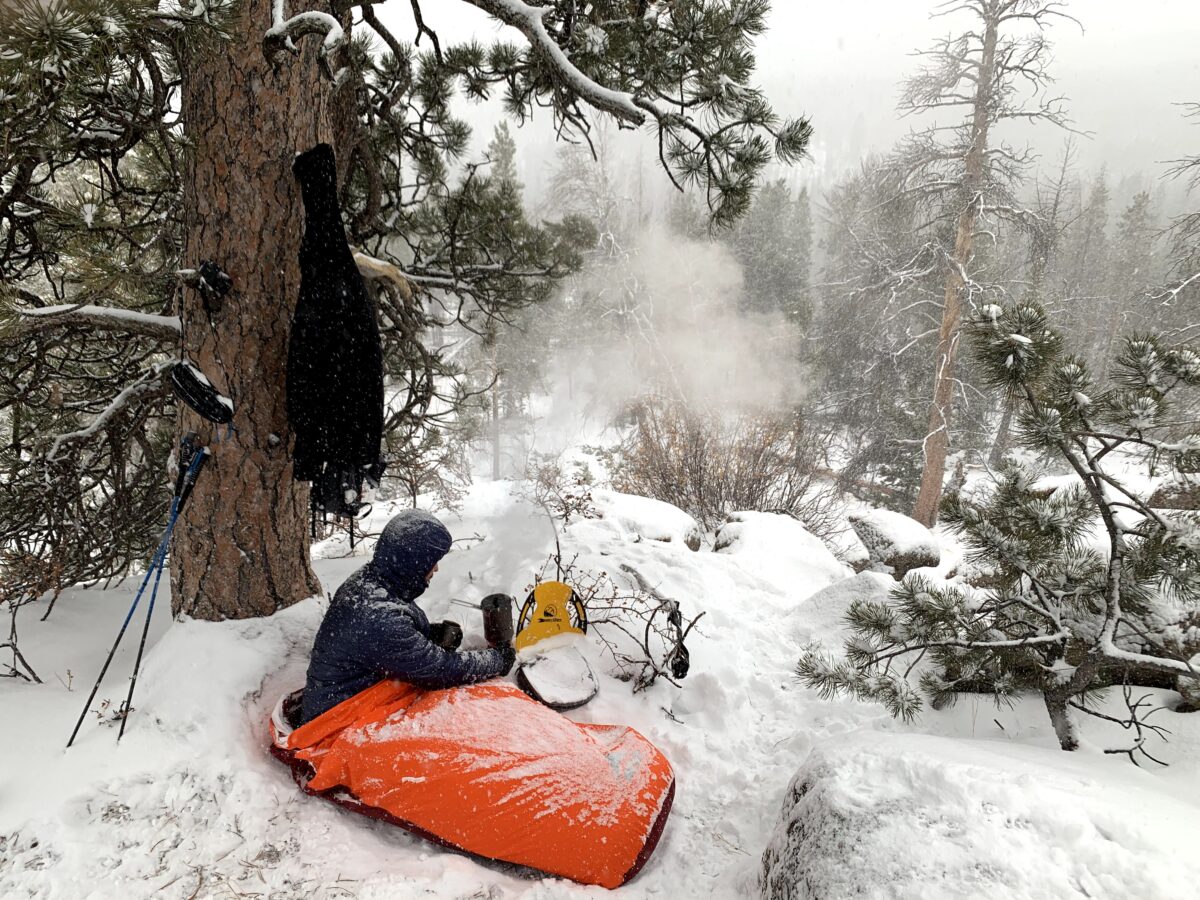


Home › Forums › Leave No Trace Winter Backpacking Best Practices